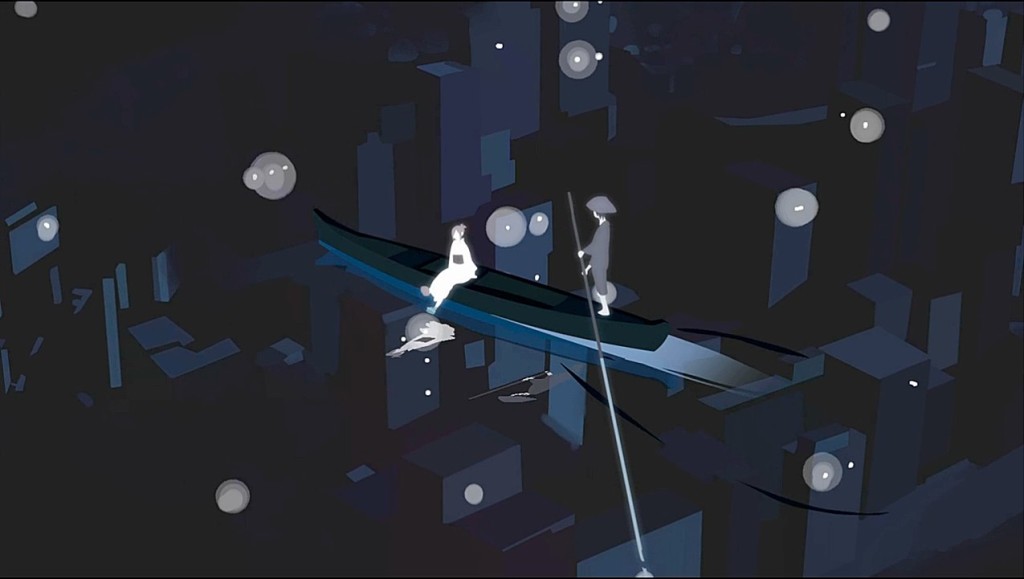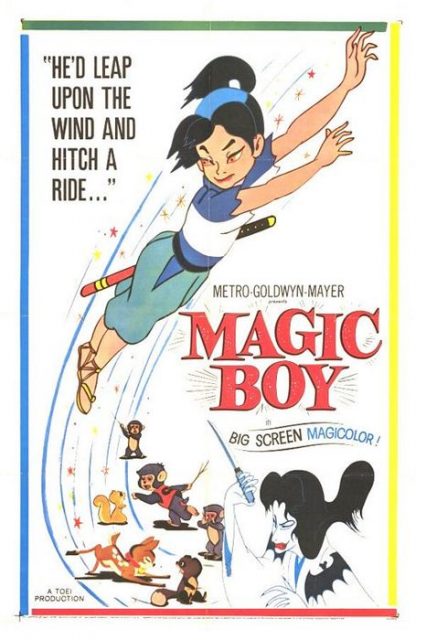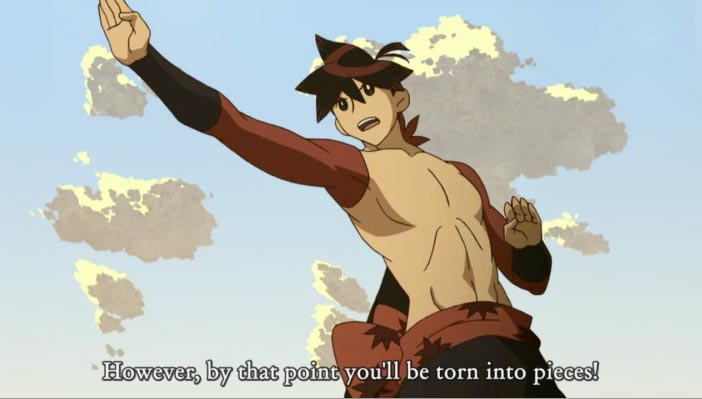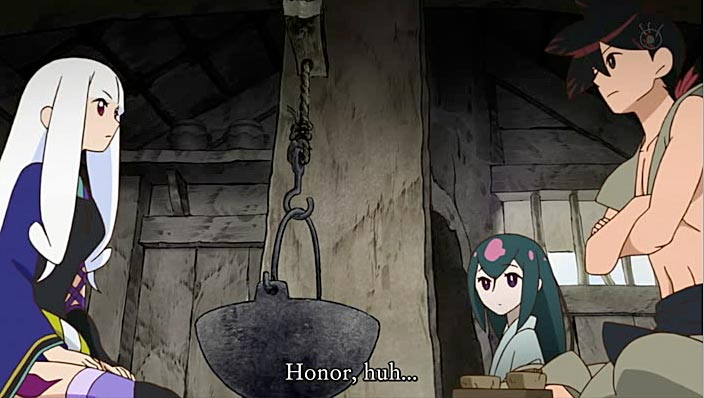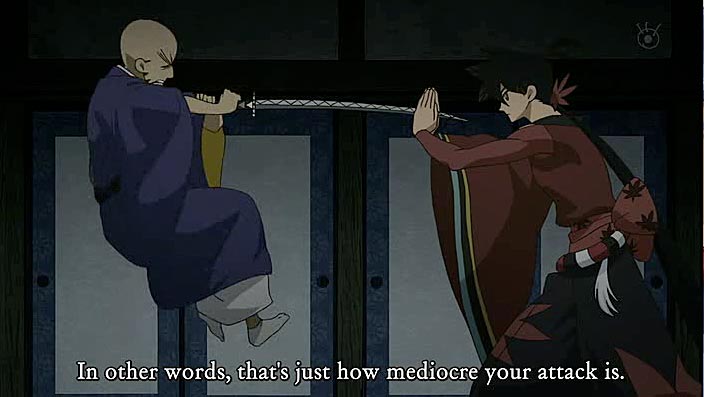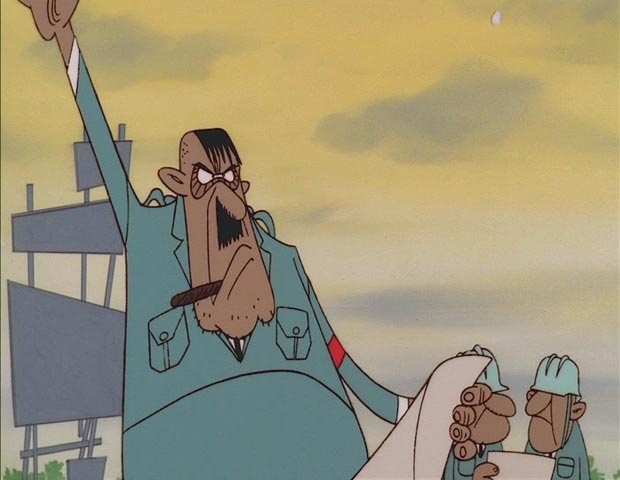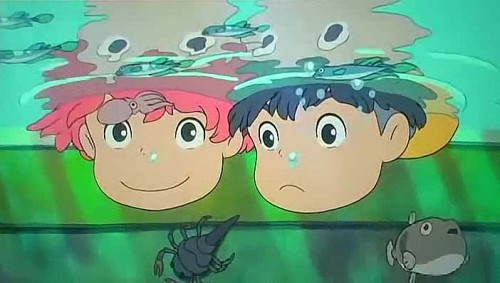The human mind requires regular doses of absurdity to maintain sanity. Not just any nonsense will do, though; otherwise, you could obtain your recommended daily allowance of absurdity by perusing the editorial page of any newspaper. The best nonsense is as rigorously logical as it is absurd, e.g., Lewis Carroll. The anime industry supplies much nonsense every season, and winter 2014 looks to be particularly rich. Here’s a quick look at some first episodes to see which might be properly silly and which are likely just dumb.
A recent genre of anime is travesties involving Oda Nobunaga. There are two this time, Nobunagun and Nobunaga the Fool. One involves a military-otaku girl who wields a gun embodying the spirit of Nobunaga; the other has mecha. Both feature random historical characters, from Joan of Arc to Jack the Ripper, and both feature lots and lots of action. Yawn.
Silly/dumb rating (enjoyably absurd = 10; just plain stupid = 1): 3 (both shows)
An imperious little girl riding a pink bicycle with training wheels intends to conquer the world in World Conquest Zvezda Plot, and she just might do it. There are lots of explosions, and many strange people wearing masks run around, acting threatening and shouting slogans. So far, it makes no sense at all — which is not necessarily a bad sign, but I do expect some exposition in the second episode.
Silly/dumb rating: 7
I sampled three separate shows about people with magical powers, two of them in high school settings. Magic is more contagious than the flu in Magical Warfare. Norio Wakamoto is a frog familiar in Wizard Barristers. A young man learns that he is a princess in Witch Craft Works. There are also giant armored bunnies.
Silly/dumb ratings: Magical Warfare, 5; Wizard Barristers, 6; Witch Craft Works, 5.
Space Boobies Dandy is nothing like Cowboy Bebop. The first episode was pure farce. This could be fun if the writers are deft, but Dandy is a flake who could easily become tedious. I suspect the dub is unwatchable.
Silly/dumb rating: 6
Robot Girls Z is an improved Love Pheremone (not recommended), in which the not-quite-competent heroines present a greater threat to their city than do the villains they fight. It could be fun, but the third short episode was too off-color for my taste.
Silly/dumb rating: 5
In Tonari no Seki, a student maintains his sanity at school by undertaking various complicated projects at his desk in the back of the classroom, such as building a Pythagoras-Switch arrangement using erasers as dominoes. This annoys the girl at the next desk over, and she annoys me. The best part was the music, which reminded me of Masaki Kurihara.
Silly/dumb rating: 4
Hell is a complicated place in Hozuki no Reitetsu. Hozuki is the demon king’s right-hand oni, handling crises, solving problems and raising goldfish flowers (which are nothing like Nematanthus). I usually find “slice of life” series tedious, but this slice of afterlife has promise.
Silly/dumb rating: 8
I’ll probably watch more of Hozuki no Reitetsu and World Conquest Zvezda Plot, and maybe Space Dandy and Wizard Barristers. The rest — meh. At least there’s more Kill la Kill.







